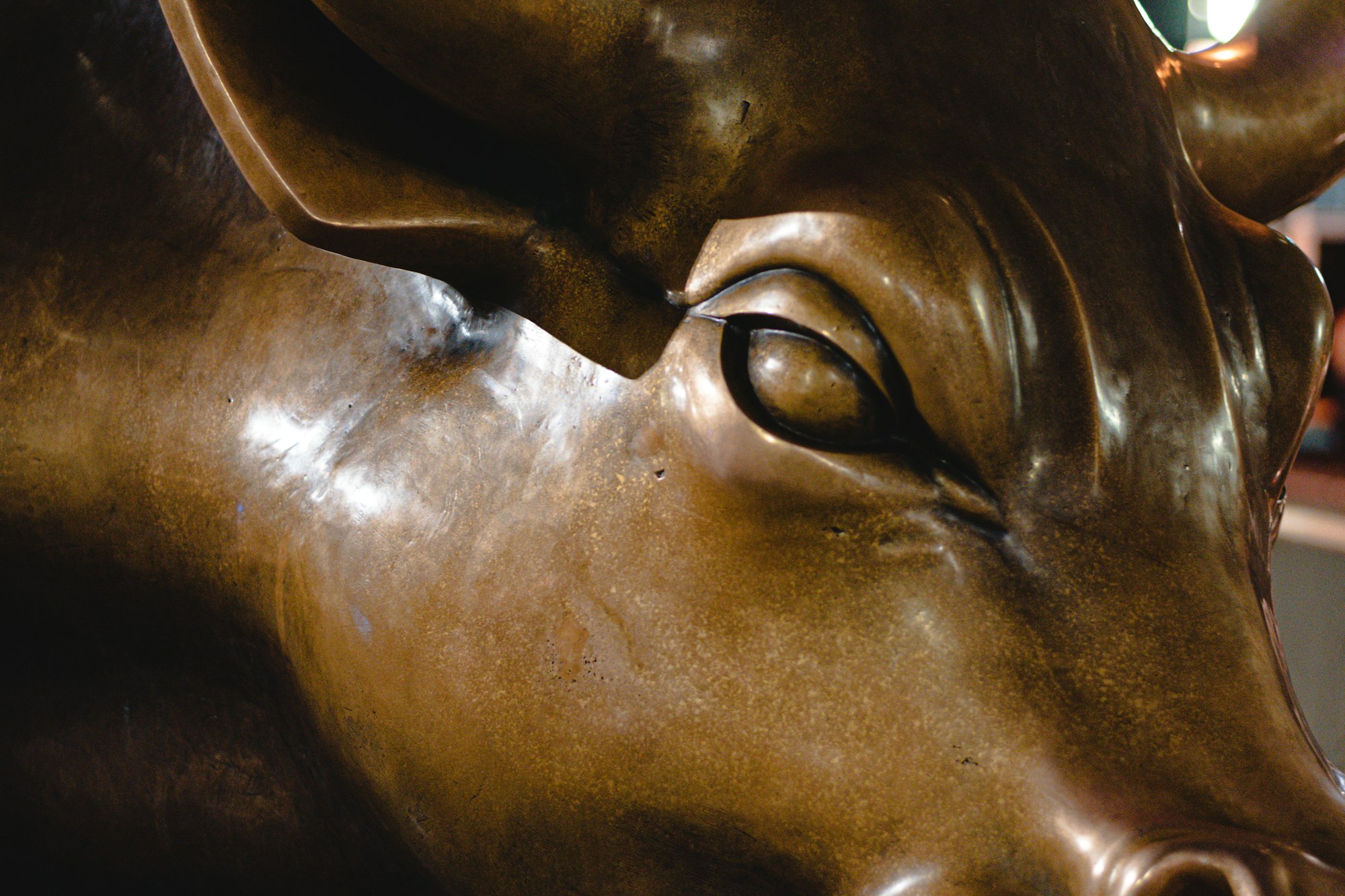Feb 16 - Belonging, Sora, Crypto bulls, DeFi helps the USD, AI Trading, Bank stability, Vision Pro woes

❤️ In this edition of S3T:
- Macro: When Silicon Valley Bank and 2 other mid-size US banks suddenly failed the bailouts represent the latest chapter in systemic moral hazard, from the "too big to fail" in 2008 to now "too many to fail" in 2023. Plus: Crypto bull market and more.
- Emerging Tech: Sora brings AI enabled text to video. AI trading going mainstream. AI adoption will be driven by blockchain. People are returning their Vision Pros.
- Change Leadership: We focus too much on trying to make people see the future. We don't spend enough time helping them see that they have a place in that future. What change leaders can learn from the hospitality industry.
🎧 Listen to this episode on the S3T Podcast - Be sure to follow the S3T podcast so you never miss a show!
Opinions expressed are those of the individuals and do not reflect the official positions of companies or organizations those individuals may be affiliated with. Not financial, investment or legal advice. Authors or guests may hold assets discussed.

📈Macro
Good times here again for Crypto
The Crypto market cap is back above 2 Trillion. Half of that is due to Bitcoin's price breaking above $50,000 on demand from recently approved ETFs. The rising tide is also lifting crypto stocks and Blackrock is rumored to be on track to acquire more BTC than Microstrategy by summer.
DeFi and Stablecoins boosting the US dollar?
U.S. Federal Reserve Gov. Waller (one of seven governors on the Federal Reserve Bank board) says crypto so far is having a positive effect on the US dollar. As decentralized finance (DeFi) gains adoption, the increased use of stable coins can have the effect of strengthening the dollar's dominance. Why? Stable coins for the most part hold US dollars as their reserves.
💰Banks: Too big to fail in 2008, Too many to fail in 2024
Raghuram Rajan and Viral Acharya dig into unanswered questions lingering from the 2023 banking crisis when Silicon Valley Bank and 2 other mid-size US banks suddenly failed. Rajan and Acharya note that the bailouts represent the latest chapter in systemic moral hazard, from the "too big to fail" in 2008 to now "too many to fail" in 2023. Rajan is author of the seminal book on India's Economic Future Breaking the Mould.
The authors point out the entanglement of regional lenders in the commercial real estate market correction. One fifth of office space is empty and delinquencies are rising in part due to remote work (see latest WFH Research below).
Concerns intensified recently when NY Community Bancorp (which seemed stable until now) suddenly dropped 46% as investors realize that small banks like Bancorp hold nearly 70% of commercial real estate loans.
WFH Research latest data on Remote Work updated for Feb 2024 (PDF) indicates that remote and hybrid work continue to be a reinforcing norm supported by common sense considerations of time management (reduced commute) as well as well being. The upshot for regional banks and regulators: attempts to reverse WFH won't save commercial real estate. The data comes from a monthly survey run jointly by the University of Chicago, ITAM, MIT, and Stanford University.
🔭Emerging Tech
OpenAI Sora: text to video
OpenAIs latest creation, Sora, generates photorealistic videos from a few lines of text and/or from a still photo. The process starts with a video that looks like static noise then iteratively removes the noise to create the final video.
AI adoption will be helped by blockchain
VanEck sees blockchain as a critical driver for AI adoption: "There is a significant chance that public blockchains are the key to unlocking the widespread adoption of artificial intelligence (AI) and that AI applications will be crypto’s raison d'être."
AI and Trading
61% of institutional traders surveyed by JPMorgan believe AI will shape the future of trading. AI bots have been around in Crypto for several years but now traditional institutions are betting that AI can provide trade predictions and identify shifts in investor sentiment.
Returning those Vision Pros
Customers are returning their Apple Vision Pro headsets, complaining about neck and eye strain as well as difficulty navigating between windows and files in the UI.

CHANGE LEADERSHIP

🧭What the Hospitality Industry can teach Change Leaders
We spend a lot of time talking about the resistance that we face and the people who aren’t helping and who don’t get it. We spend time learning tactics to overcome resisters, and even more time dealing with it on a day to day basis. Wouldn't it be ironic if upon closer examination, we find that maybe we’re actually contributing to that resistance?
One of the greatest reasons people resist change is they can't picture themselves in that future. It doesn't feel like it's theirs. They don't feel like they BELONG.
This hit home with me while listening to the book Unreasonable Hospitality by Will Guidara. The book chronicles the journey of the team behind 11 Madison Park, an award winning restaurant voted the best restaurant in the world. The book describes how their success was propelled by taking the art of hospitality to an extraordinary level - "unreasonable hospitality."
Why would a book about the hospitality industry be relevant to change leadership? Because there’s a crucial lesson that innovators and change leaders need to learn from the hospitality industry.
Think about what the hospitality industry actually does:
Restaurants, hotels, tourism destinations are all focused on one thing: They are working very hard to help you feel a sense of belonging in a place that you've never been to. A place that otherwise might feel strange or different. They want you to feel welcome. They want you to picture yourself there.
So the hospitality industry and especially the tourism and travel industry, has learned to go all out and double down on making people feel welcome and feel a sense of belonging. Presenting a destination, and helping you picture yourself in that destination. Making you feel like you belong in that destination.
Because they know this is the deep underlying foundation for the excitement, positive vibes, and unforgettably great memories that a person could feel after visiting a destination, or restaurant or hotel. A sense of belonging. Its how you get people highly committed and passionate about going to a new place.
It is so vital to instill a sense of belonging, and it takes more work than most of us realize. The hospitality industry learned this a long time ago.
Apply this to your work as a change leader
If you compare that to innovation and change leadership, it raises a crucial, and perhaps uncomfortable question for change leaders, innovators, and founders:
Do we work as hard at helping people feel comfortable and welcome in the future or in the new change that we’re bringing? Do we present our visions of the future as a destination that is welcoming them?
Or do we perhaps make them feel like that’s not for them? They’re not cool enough, they don’t get it.
This is the achilles heel of innovators and change leaders: all too often - without meaning to - we cause division, strife, conflict. Instead of being dividers, innovators can learn to help people feel a sense of belonging.
It's not enough to make people see or believe in some future vision. They need to see themselves in that future. It needs to feel like it was prepared for them. Like it's going to welcome them. Not exclude them. Not leave them behind. They need to feel a sense of belonging.
The root of the problem
We focus too much on trying to make people see the future that we see. We don't spend enough time helping them see that they have a place in that future. That yes, they belong in that future. It's for them. It's going to benefit them ...not just you. And not just all the hip cool brave futurists like you.
When you introduce change - what you're doing is bringing a new future. You're literally inviting people to a new destination. But are we working hard enough to make people feel a sense of belonging in that new destination? Are we giving them a sense of assurance that they have a place in that future? Are we helping them picture themselves in that future?
The answer most of the time is No. We're not. Instead of creating a sense of belonging, all too often we end up creating, perhaps inadvertently - division.
We signal that there are two groups:
- the group that is hip to the future, and
- the group that isn't
In our language, our interactions and even the way we hold meetings, present our ideas and propose our plans, we let everyone know that there's an in crowd and then there’s the group that doesn’t get it. They’re not cool. They’re so yesterday.
We spend a lot of time talking about the resistance that we face and the people who aren’t helping and who don’t get it. We spend time learning tactics to overcome resisters, and even more time dealing with it on a day to day basis.
Wouldn't it be ironic if upon closer examination, we find that maybe we’re actually contributing to that resistance?
That we weren’t thinking and working hard enough about how to make people feel welcome in what's coming? That new org structure, the new process, new platforms, new financial models - whatever changes we're working to bring, we need to make sure people feel a sense of belonging in that new situation.
So how do we take a hospitality approach to change leadership?

